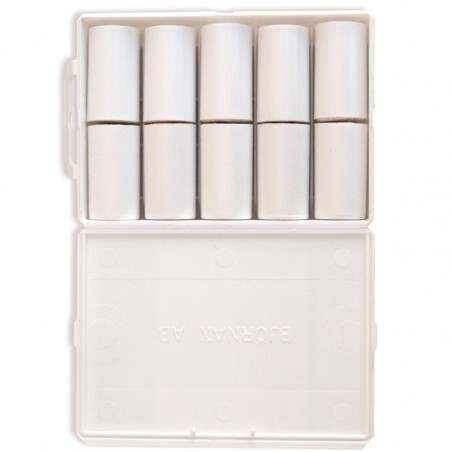The immune system is organized in
primary
(thymus and bone marrow) andsecondary
(lymph nodes, spleen, mucosa-associated lymphoid tissues or MALT, tonsils, skin immune system) organs and tissues.
1)
Primary lymphoid organs
are involved in lymphocyte production, differentiation and selection.The thymus is an organ devoted to the maturation and production of T lymphocytes. It develops from the third week of gestation, then after 8 months of age, it gradually reduces and disappears (thymic involution). The development of T lymphocytes takes place in the cortical microenvironment. T cell progenitors, originating from the bone marrow, mature in thymocytes which undergo positive or negative selection before proliferating and differentiating into mature T lymphocytes. Only thymocytes expressing receptor molecules (TCR) that are able to recognize Major Histocompatibility Complex (MHC) antigen molecules and not autoantigens will differentiate in specific mature non self-reactive lymphocytes, while the thymocytes that are reactive against the "self" are deleted by apoptosis.
The thymus is also an endocrine organ that can secrete hormones (thymulin, Growth Hormone, Prolactin) that influence the development and the function of T lymphocytes and it also has receptors for several hormones (e.g, ACTH, cortisol etc.) and for pro-inflammatory and pro-immune cytokines (e.g. IL1, TNFa, IL-6 etc).
The bone marrow is a lymphopoietic organ producing:
- Undifferentiated T cells progenitors, which will mature in the thymus,
- B cell precursors leading to the development of B lymphocyte clones specific for the antigens,
- Myeloid cell lines and dendritic cell precursors.
2) The
secondary lymphoid organs
are all able to capture antigens and activate the acquired immune response.The lymph nodes are the site of antigen recognition by B and T cells. These cells activate and proliferate. In pig, differently to other species, lymph nodes appear lobulated because they are derived from the fusion of 3 or more "nodular units", each constituting a functional lymph node with a particular structure. The lymph enters each unit through the afferent lymphatics penetrating from the capsule into the cortex at the level of its own afferent hilus, while it comes out by efferent lymphatic vessels, at the level of internodular efferent hilus. T lymphocytes enter and return to the systemic circulation mainly through the high endothelial venules (HEV).
A high number of lymphocytes pass every day from blood to the spleen, where the antigens are filtered. Consequently, it is the site of activation of the humoral and cell-mediated immune response to systemic infection (bacteremia/septicemia). The spleen also allows the removal of immune complexes and of aging erythrocytes.
In pig, MALT (mucosal associated lymphatic system) has a critical defensive role. Many pathogens penetrate the organism through the mucosal surface (gut, respiratory tract, breast and urogenital surfaces). The main mechanism of defense is the secretion of mucosal IgA in association with humoral (IgG) and cell-mediated immune response. Furthermore, activation/regulation of the immunological tolerance occurs in the MALT.
The tonsils are solitary or aggregated nodules of diffuse lymphoid tissue located in the lamina propria of the soft palate lamina (palatine tonsils) and in the pharynx at the base of the tongue (lingual tonsil). In the tonsils, lymphocytes recirculate between blood and the intestine.
The GALT (Gut-Associated Lymphoid Tissue) is in different compartments, organized in non-encapsulated lymphoid tissues Peyer's patches (PPs), in lymphoid follicles in the mucosa and in mesenteric lymph nodes. Furthermore, effector T lymphocytes are localized between the enterocytes (intraepithelial T lymphocyte) and in the lamina propria, together with B cells and macrophages.
In the respiratory tract, immune cells (lymphocytes and macrophages) are located in different areas. Lymphoid nodules in the wall of bronchi constitute the bronchus-associated lymphoid tissue (BALT) which develops after antigenic stimulation; immunocompetent cells (lymphocytes and macrophages) are present as an interstitial pool, in an intravascular pool (such as pulmonary intravascular macrophage) or are within the epithelium, in the lamina propria or in the broncho-alveolar space.

Cellular and humoral components that can trigger an innate and specific immune response are also located in the skin (Skin Immune System). IgG and the IgM can reach the skin but secretory IgA are locally produced. Keratinocytes are able to respond to pathogens by activating TLRs and by triggering the inflammatory / innate defensive response.





